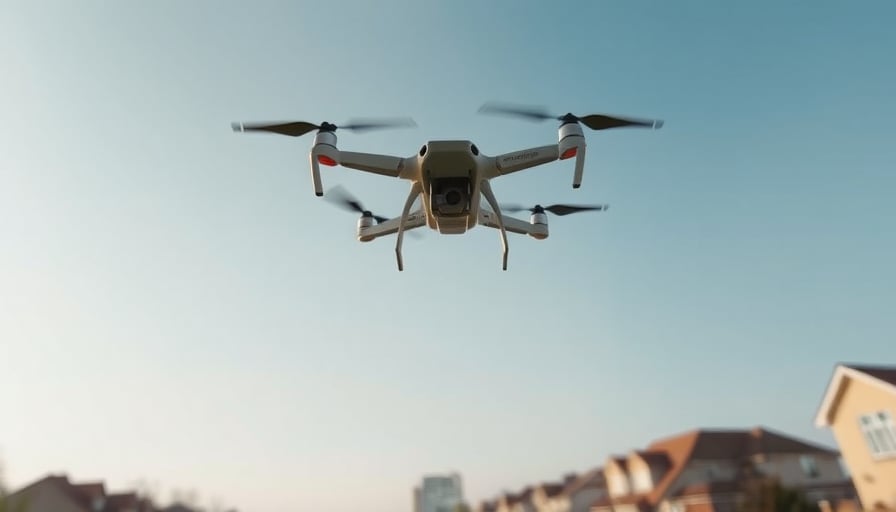The Low‑Airspace Boom and ChenXi Aviation: A Strategic Nexus
The 2025 Hunan International General Aviation and Low‑Airspace Economy Expo, held on 24 November, crystallised the Chinese government’s ambition to forge a trillion‑yuan industry around the burgeoning low‑airspace market. With a 60 000 m² exhibition hall and 200 leading enterprises, the event showcased advanced manufacturing, new infrastructure, and a sprawling catalogue of 687 application scenarios across agriculture, tourism, emergency services and education. According to CITIC Jian‑Tuo Securities, the low‑airspace chain is poised to reach 3.5 trillion yuan by 2035, driven by policy support, technological breakthroughs and expanding use cases.
ChenXi Aviation—listed on the Shenzhen Stock Exchange—positions itself squarely within this ecosystem. Founded in 2000, the Xi’an‑based firm specialises in the research, development, production and sale of aviation mechanical and electrical products, including:
- Inertial navigation systems (flexible, fiber, laser, piezoelectric strap‑down),
- Navigation computer components,
- Aero‑engine electronics (parameter collectors and electronic control systems),
- Unmanned aerial vehicles (UAVs),
- Professional technical services.
With a market cap of 9.97 billion CNY and a closing price of 18.12 CNY on 20 November, ChenXi’s valuation remains precariously low, reflected in a –210.85 price‑earnings ratio. Yet, its product portfolio aligns precisely with the needs of low‑airspace operators: reliable navigation, engine monitoring, and UAV platforms that can serve the 245 km² testing zone and the 687 application scenarios showcased at the expo.
Why the Expo Matters for ChenXi
Policy Momentum The Chinese government’s “General Aviation” push, coupled with the “Low‑Airspace Economy” initiative, translates into direct subsidies, preferential procurement, and accelerated regulatory approvals for navigation and UAV systems. ChenXi’s inertial navigation and engine electronic products are prime candidates for inclusion in new procurement lists.
Demand Surge in UAVs The expo highlighted UAVs as a core application, especially in agriculture, tourism, and emergency services. ChenXi’s existing UAV offerings, coupled with its proven avionics, position the company to capture a significant share of this growing market segment.
Integration with Defence‑Civil Synergies The same event that highlighted commercial aviation also underscored the dual‑use nature of many technologies. ChenXi’s aero‑engine electronics and inertial navigation systems are already employed in civil aircraft; extending these products to military‑grade applications can unlock additional revenue streams, especially as defence spending increases under the “15th Five‑Year Plan”.
The Risks and the Call for Action
Despite these alignment points, ChenXi’s financials reveal a negative earnings outlook and a strikingly low P/E ratio, suggesting market scepticism regarding profitability. If the low‑airspace boom fails to materialise as projected, or if competition from larger OEMs encroaches, ChenXi’s growth could stall.
Stakeholders must therefore:
- Accelerate R&D in next‑generation inertial systems and UAV autonomy to differentiate from competitors.
- Secure strategic partnerships with provincial low‑airspace pilots and defence ministries to lock in early adopters.
- Improve financial discipline to turn the negative earnings narrative into a positive trajectory, perhaps through targeted cost optimisation and capital restructuring.
Conclusion
The 2025 Hunan low‑airspace expo is more than a trade fair; it is a policy announcement that signals a seismic shift in China’s aviation landscape. ChenXi Aviation, with its robust avionics and UAV capabilities, stands at the nexus of this transformation. The company’s fortunes will hinge on its ability to translate policy momentum into tangible contracts, innovate beyond its current product base, and shift investor perception from a struggling, under‑valued stock to a leading player in China’s next‑generation aviation economy.




